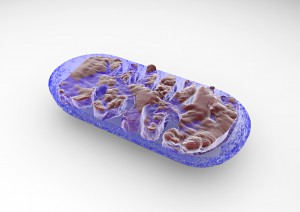 Mitochondria, often thought of as powerhouses of the cell, are fascinating eukaryotic organelles with a double-layered membrane and their own genome. Mitochondrial DNA (Mt DNA) is typically about 16570 bases, circular, highly compact, haploid and contains 37 genes, all of which are essential for normal mitochondrial function. Thirteen of these genes provide instructions for making enzymes involved in oxidative phosphorylation, a process that uses oxygen and simple sugars to create adenosine triphosphate (ATP), the cell’s main energy currency. The remaining genes code for transfer RNA (tRNA) and ribosomal RNA (rRNA) which are necessary for translating messenger RNA transcribed from nuclear DNA, into protein molecules.
Mitochondria, often thought of as powerhouses of the cell, are fascinating eukaryotic organelles with a double-layered membrane and their own genome. Mitochondrial DNA (Mt DNA) is typically about 16570 bases, circular, highly compact, haploid and contains 37 genes, all of which are essential for normal mitochondrial function. Thirteen of these genes provide instructions for making enzymes involved in oxidative phosphorylation, a process that uses oxygen and simple sugars to create adenosine triphosphate (ATP), the cell’s main energy currency. The remaining genes code for transfer RNA (tRNA) and ribosomal RNA (rRNA) which are necessary for translating messenger RNA transcribed from nuclear DNA, into protein molecules.
One of the most important characteristics of mitochondrial genome that is relevant to field of forensics is the copy number. Continue reading “Mitochondrial DNA Typing in Forensics”




